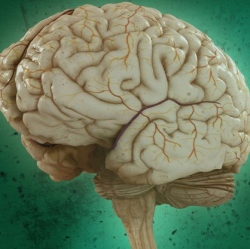
Conventional wisdom dictates that the brain is divided into distinct regions by the sensory inputs that activate them. Therefore, the visual cortex is the region of the brain that processes sight, and the auditory cortex is where sound is interpreted.
Within these regions are then thought to be specialized sub-regions that handle specific tasks, such as identifying – independently of sounds or meaning – number symbols or words and letters.
At Hebrew University’s Amedi Lab for Brain and Multisensory Research, however, work with unique tools called "Sensory Substitution Devices" (SSDs) – the results of which are published in Nature Communications – has challenged this view.
The SSDs take information provided by one sense and present it in another. One example of this sense substitution in action is a project where visual images from smartphones and webcams was translated into a soundscape that allowed blind users to create a mental image of objects, including physical dimension and color. The researchers claim they also enabled blind users of the SSDs to "read" letters using this method of identifying written words using sound.
"These devices can help the blind in their everyday life," explains Prof. Amir Amedi, "but they also open unique research opportunities by letting us see what happens in brain regions normally associated with one sense, when the relevant information comes from another."
Of particular interest to the team was whether the blind people in the study used the "visual word form area" sub-region of the brain – the area that identifies the shapes of words and letters in sighted people’s brains – to process this information.
Blind people use ‘visual’ brain regions when interpreting sound cues about objects
According to researcher Sami Abboud, the blind participants did indeed "see through sound" using the same "visual" brain regions to interpret this information as sighted people. "These regions are preserved and functional even among the congenitally blind who have never had vision," Abboud confirms. Therefore, blind people reading Braille using their fingers will still use the "visual" areas of their brain as they process the text.
